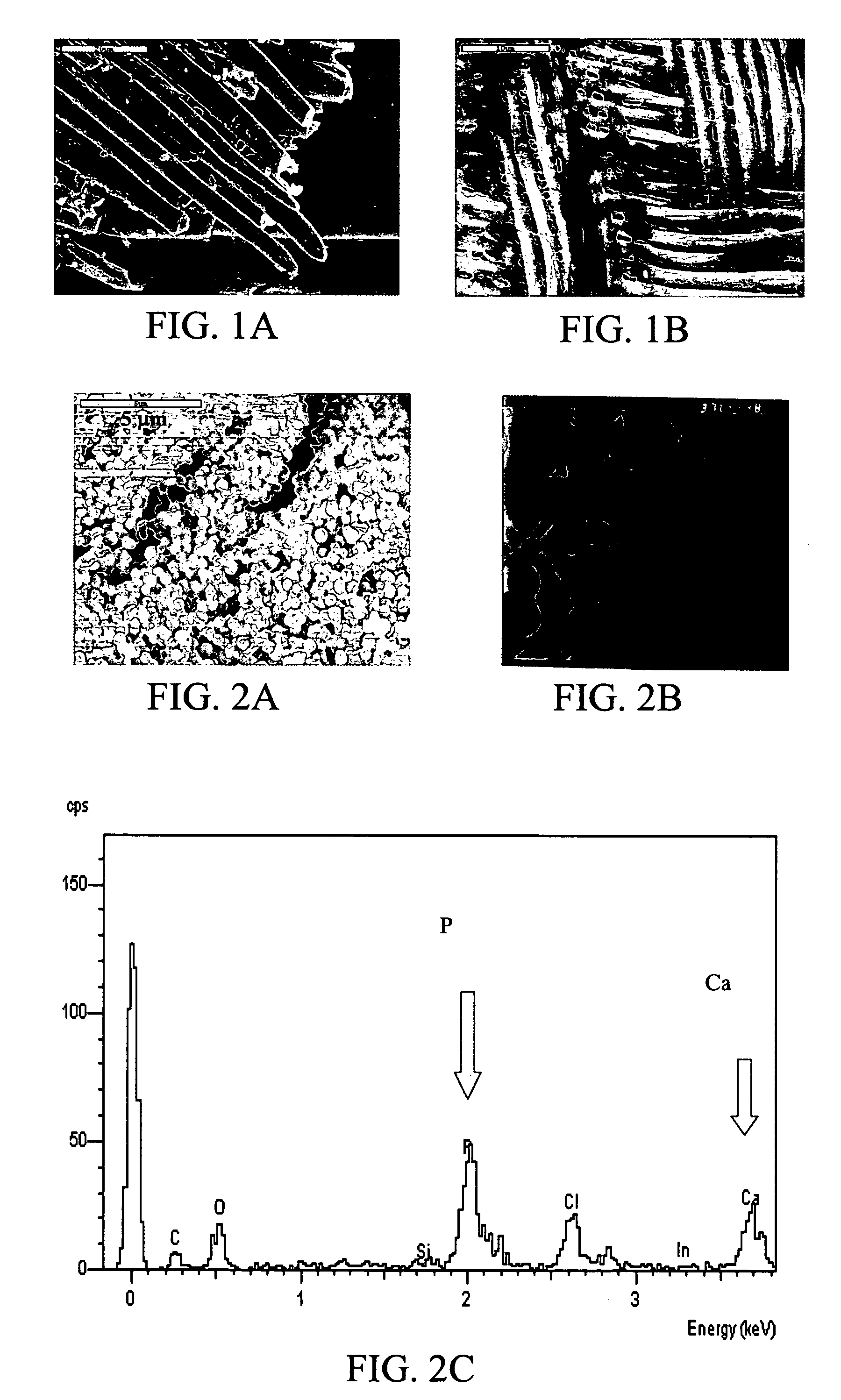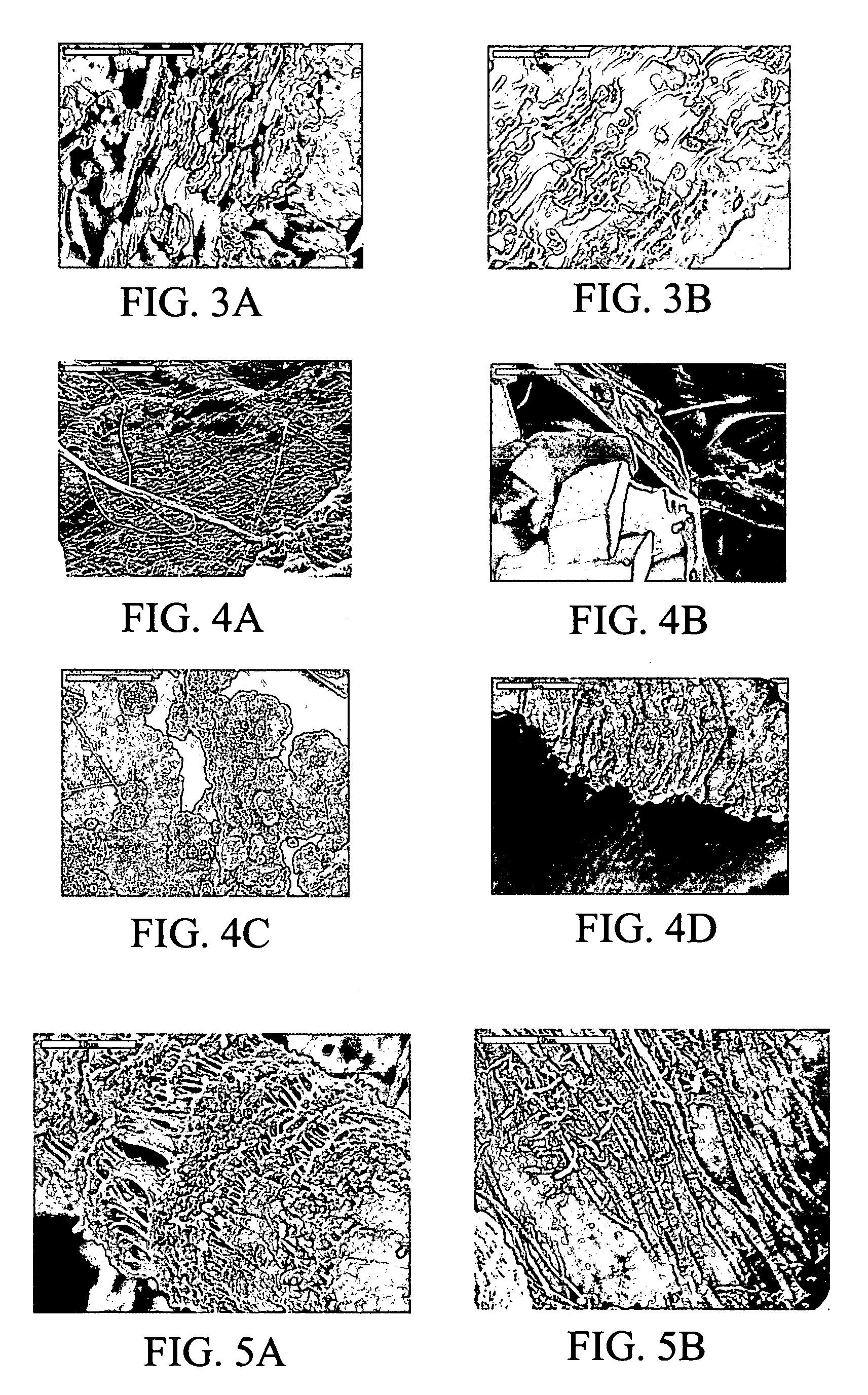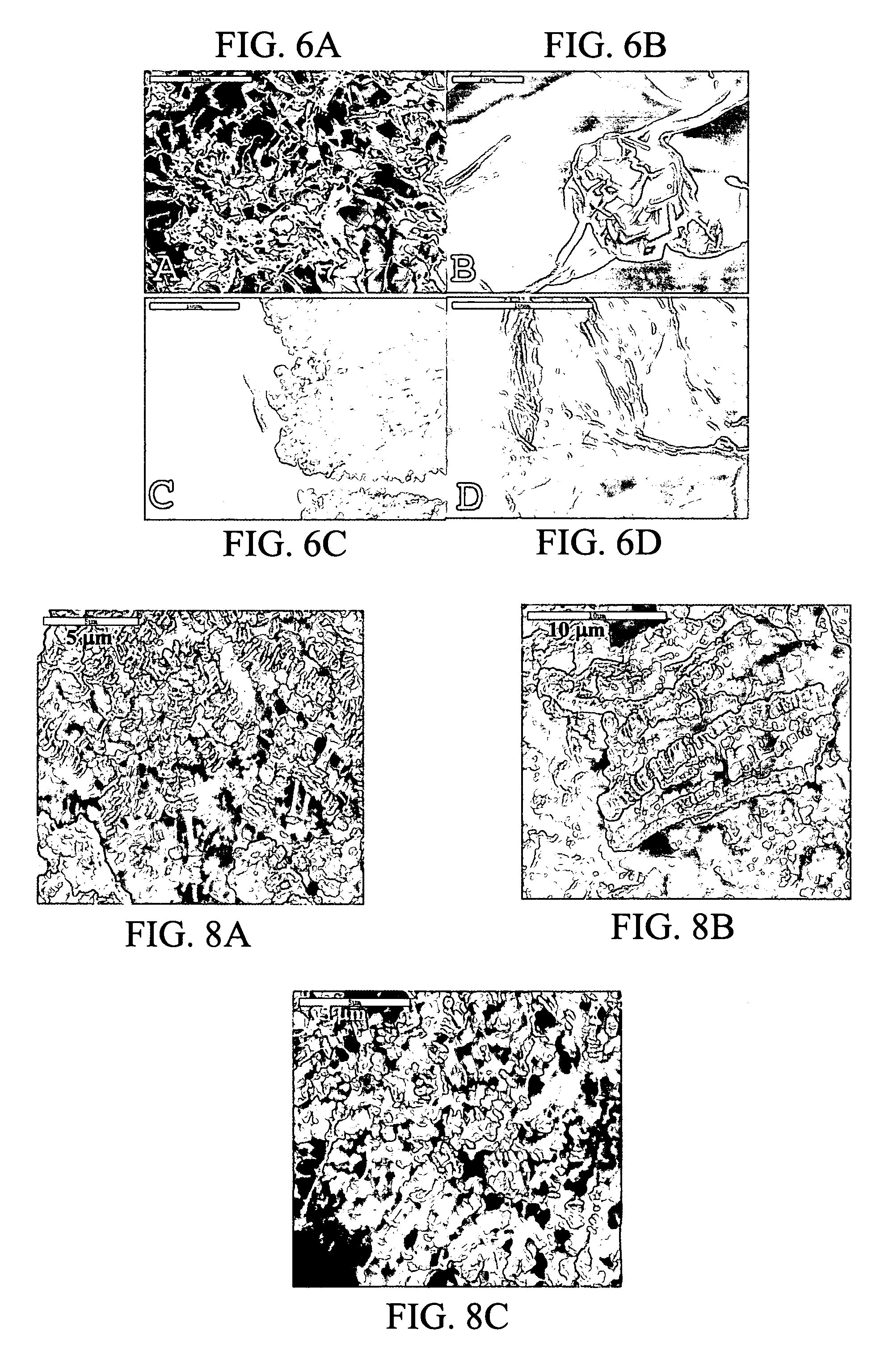Biomimetic organic/inorganic composites, processes for their production, and methods of use
a biomimetic organic/inorganic composite and composite technology, applied in the field of biomimetic organic/inorganic composites, processes for their production, and methods of use, can solve the problems of brittleness and prone to cracking, no successful biomimetic bone composite or microstructure, and lack of toughness, etc., to achieve the effect of superior infiltration
- Summary
- Abstract
- Description
- Claims
- Application Information
AI Technical Summary
Benefits of technology
Problems solved by technology
Method used
Image
Examples
example 1
Mineralization of Collagen with Calcium Carbonate
[0090] The PILP mineralization of bovine Achilles tendon type-I collagen showed interesting results. The individual fibers of the bovine collagen became coated or encrusted by a film of CaCO3. In some regions on the collagen fibers, the mineral film was patchy and in the form of isolated tablets (FIGS. 3A and 3B). Because there is a lack of facets in PILP formed crystals, energy dispersive spectroscopy was used to verify that these films and tablets are composed of CaCO3. Interestingly, the CaCO3 “tablets” appear to have preferentially deposited along the fibers in a banded pattern (FIGS. 3A & 3B). It is not clear if the PILP phase was deposited in those locations due to topography (such as defects or kinks along the crimped collagen backbone), or if some more specific templating interaction is occurring between the PILP phase and organic matrix.
[0091] The CELLAGEN sponge (which is reconstituted bovine collagen) provides a better su...
example 2
Mineralization of Collagen with Calcium Phosphate
[0095] The results for the CaP system were very similar to the CaCO3 system, but with some differences in the mineral texture. The XRD spectrum of the mineralized collagen (not shown) shows peaks consistent with HA, although some peak shifts and differences in peak intensities are noted, which seem to suggest polymer-mineral interactions are prevalent (Sivakumar, M. et al. [2002] Biomaterials, 23(15):3175-3181). The mineralized CELLAGEN was also subjected to an acid etch treatment to remove excess mineral, and showed very similar results to the CaCO3 composites. A periodic banding pattern is seen for the more protected mineral (FIGS. 8A and 8B), and crystals have a similar disk-like morphology. At this point, it is not clear if these are single crystals, or just thick clumps of remnant mineral phase. In some regions of the sample, the mineral remnants were less organized and the morphology was different, exhibiting a more platy shape...
example 3
Crystallographic Orientation of Calcium Phosphate on Collagen Fibrils
[0099] A reconstituted collagen sponge (Cellagen., ICN Biomedicals Inc.), which is comprised of pure type-I bovine collagen, was mineralized with HA mineral using the PILP process. The process involved using a 1 mM CaCl2.2H2O solution in combination with 200 μg / mL Poly(αβ-DL-Aspartic acid) (Polyasp) and 200 μg / mL Poly(vinyl phosphonic acid) (PVPA). The collagen sponge was cut into a 3×3 cm2 sample and placed in the mineralizing solution. This solution was then placed, uncovered, in a desiccator with three equal sized petri dishes, uncovered, and filled with crushed diammonium hydrogen phosphate. Uncovered is stressed in this explanation because, in the CaCO3 PILP process, all of the dishes are covered with parafilm into which three holes are punched to reduce the diffusion rate of the reactants. The ammonium carbonate decomposes much more rapidly than the ammonium phosphate; therefore, the reaction kinetics are de...
PUM
| Property | Measurement | Unit |
|---|---|---|
| diameter | aaaaa | aaaaa |
| diameter | aaaaa | aaaaa |
| diameter | aaaaa | aaaaa |
Abstract
Description
Claims
Application Information
 Login to View More
Login to View More - R&D
- Intellectual Property
- Life Sciences
- Materials
- Tech Scout
- Unparalleled Data Quality
- Higher Quality Content
- 60% Fewer Hallucinations
Browse by: Latest US Patents, China's latest patents, Technical Efficacy Thesaurus, Application Domain, Technology Topic, Popular Technical Reports.
© 2025 PatSnap. All rights reserved.Legal|Privacy policy|Modern Slavery Act Transparency Statement|Sitemap|About US| Contact US: help@patsnap.com



